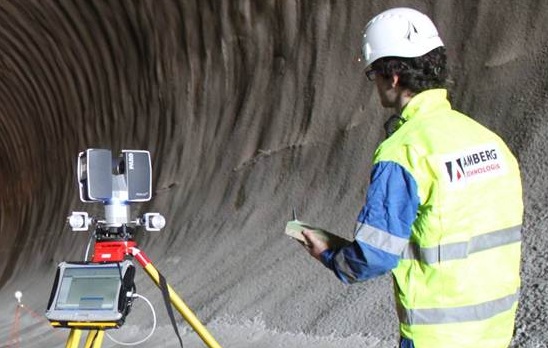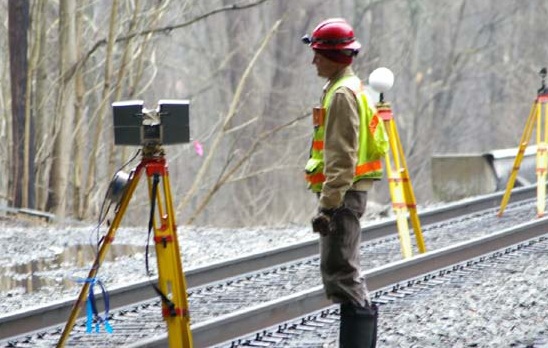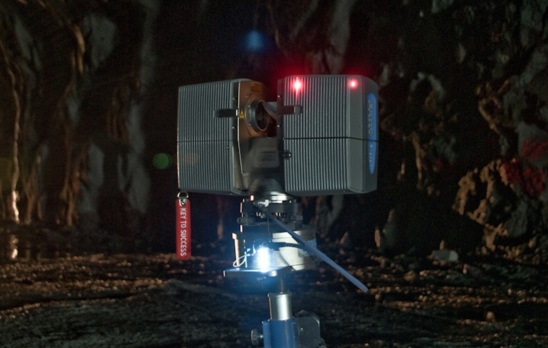About Us

- Home
- About Us
- Case Studies
- 3D Laser Scanning & BIM
- Anderson & Associates Reduces Tunnel Interior Measurement Time by 60% Using Laser Scanners
Anderson & Associates Reduces Tunnel Interior Measurement Time by 60% Using Laser Scanners
For this project, A&A used a FARO Laser Scanner and ATS Real Reality Tunnel software to model the complete interiors of the tunnels and structures in 60% less time than is traditionally required.
“The FARO scanner turned out to be ideal for this project. Its high scanning speed made it possible to complete the job in a fraction of the time required by the conventional method.”
The Heartland Corridor is the most ambitious railroad engineering project of the last century. The project required increasing the vertical clearance of 28 tunnels and removing 24 overhead obstructions. Anderson & Associates (A&A) was hired to document the tunnels in order to check final clearances and provide a record for maintenance. Anderson & Associates (www.andassoc.com) is headquartered in Blacksburg, Virginia and has offices in West Virginia and North Carolina as well.
A&A is a professional design firm that specializes in civil and environmental engineering, surveying, planning, and landscape architecture. Since 1968, they have served as planners, designers, stewards, and advocates for institutional, municipal, state, industrial, and private sector clients. For this project, A&A used a FARO Laser Scanner and ATS Real Reality Tunnel (RRT) software to model the complete interiors of the tunnels and structures in 60% less time than is traditionally required.
“In addition to saving huge amounts of time, laser scanning made it possible to model the complete interior of the tunnel,” said Neil Martin, Project Manager & Associate Vice President Surveying. “This approach gave us peace of mind that we had identified every conflict. That was lacking in the past when we were only able to measure selected cross-sections.”
Heartland Corridor Project
The Heartland Corridor is a public-private partnership between Norfolk Southern (NS) railroad, the states of Virginia, West Virginia, Ohio, and the federal government to create the shortest, fastest route for double-stack container trains moving between the Port of Virginia in Norfolk and the Midwest. The line dates back to the late 19th century and traditionally has carried mostly coal traffic. New construction began in October 2007 and involved modifying 5.7 miles of tunnels through roof excavation and liner replacement, arched roof notching, and track lowering and realignment. The improvements make it possible for the line to handle double-stack container trains and provide more capacity, speed, and reliability. The new routing improves transit time from four days to three from Norfolk to Chicago and is nearly 250 miles shorter than previous circuitous routings.
A&A’s involvement with the Heartland Corridor began in 2005 when the company was selected as a subcontractor to Hatch Mott McDonald for the clearance on 28 tunnels and 8 bridges in Virginia, West Virginia, Kentucky, and Ohio. Double-stack rail transport involves stacking intermodal containers two high on railroad cars. Introduced in North America in 1984, double-stack railcars have become increasingly common. They are used for nearly 70% of United States intermodal shipments and sharply reduce the cost per container.
Challenge of Measuring Tunnel Profile
The centers of the tunnels were high enough nearly everywhere for the double-stack railcars, but the original tunnel roofs were roughly spherical so they obstructed the outside corners of the stacked cars. These obstructions were addressed during the construction phase of the project by cutting notches into the tunnel. Conventional equipment such as total stations were used for surveying during the design process. This traditional approach relies on visual observation to select the cross-sections that appear to be the lowest point in each tunnel section.
Gallery
A total station is then used to determine the angle and distance of the points being measured to a prism. The traditional approach’s dependence on visual inspection makes it vulnerable to error as are the manual methods used to compare the resulting measurements to the train profile. For the construction phase, A&A was hired by STV/Ralph Whitehead to check the final clearances after contractors had finished their work and to document the tunnels for future maintenance.
“If traditional methods would have been used to validate this project it would have been nearly impossible to ensure that the entire distance covered by the survey was free of conflicts,” said Justin Lewis, Assistant Survey Manager for A&A.
“A conflict that was not addressed during the construction phase could have resulted in a train hitting the tunnel wall. This would have been very expensive to repair and also potentially dangerous for the crew of the train.”
Move to Laser Scanning
“In order to perform the project economically and accurately, we evaluated various laserscanning systems designed for surveying,” Lewis said. “As a phase-based scanner, the FARO Photon 120 LS is faster than the time-of-flight scanners that we looked at. This laser scanner captures data at a rate of 120,000 points per second. We also were very impressed with the RRT software that FARO bundles with this scanner. It enabled us to capture the tunnel profile, create a centerline and profile of the doublestackedcars and automatically compared the two over the entire length of the tunnel to quickly identify any conflicts.”
Ensuring That All Conflicts Were Identified
The total station measurements were imported into FARO Scene software and used to align the scan data taken at different positions inside the tunnel into a single frame of reference. The scan data from each tunnel was stitched into a continuous surface model of the tunnel interior using the Scene software based on the total station measurements of the scanner and round target positions. This surface model was then imported into RRT software for clearance verification. The technicians created the centerline and the silhouette of the doublestack cars based on the design plans using AutoCAD computer-aided design (CAD) software, then exported the data as a land.xml file. This file was imported into RRT software.
On the typical curved tunnel, this template has a constantly changing vertical orientation which would have made it very difficult to identify all of the conflicts using manual methods. RRT software, on the other hand, automatically identified the conflicts by running the template for the double-stack train across the centerline for the entire tunnel. A&A produced cross-sections of these conflicts and provided them to the contractors for rework.
A&A then re-scanned these areas after the repairs were completed and checked them to be sure the conflicts had been eliminated. Providing a complete surface map of the tunnel interior and automatically checking it against the double-stack car contour provided a much higher level of assurance that all areas of conflict had been identified than would have been possible in the past. After the structure was verified to be conflict-free, the final drawings were provided to NS.
Back to all case studies“The FARO scanner turned out to be ideal for this project,” Lewis said. “Its high scanning speed made it possible to complete the job in a fraction of the time required by the conventional method. We got the job done right on schedule in spite of the challenge of only being able to work restricted hours.” “We are seeing more and more applications for laser scanning and it’s becoming an important part of the work we do,” Lewis concluded. “For future work, we recommend scanning all tunnels and bridges prior to design. These scans would then provide a precise base for design and would be used throughout the design and construction process. The final record drawings would also provide useful maintenance documentation.”
Related Case Studies
-

Well-Connected Waterview Alliance / FARO Focus3D
Surveyor Mike Cutfield of Fletcher Construction has been utilising a FARO Focus3D high speed laser scanner for monitoring work around the tunnel portals on the enormous Waterview Connection ‘Roads of National Significance’ project in ...
Read More -

Otago University Nan Madol Runis
Faro Focus 3D Laser Scanner used on Otago School of Survey study of the Nan Madol ruins Micronesia for Humanities division of Otago University and National Geographic....
Read More




